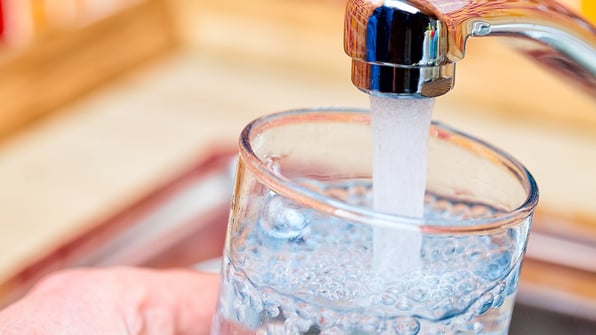
According to a 2009 study done by the Environmental Working Group, a nonprofit, non-partisan environmental health organization, more than 300 chemicals and pollutants thrive in tap water.
These contaminants include volatile organic compounds (VOCs) from agricultural runoff, as well as heavy metals, like lead, endocrine-disrupting chemicals, and fluoride.
To avoid drinking these chemicals, a lot of people trust bottled water. However, chemicals from the plastic bottle make their way into the drinking water, which means it’s no less harmful than unfiltered tap water.
In fact, Fox News reported in 2014 that more than 24,500 chemicals are found in bottled water.
Bottled water also costs more than tap water, and the plastic is worse for the environment. For the best solution to ridding your home of water pollutants, Warner Service advises purchasing a water treatment system.
If you’re not sure where to start, here’s our comprehensive list of how different water filters work for your home:
Carbon filters: Water flows through a positively charged, highly absorbent carbon (charcoal) filter that uses a process called adsorption (the adhesion of molecules of a liquid to a surface). Pollutants in the water are trapped inside the tiny pores of the carbon filter, which makes it best for removing VOCs, pesticides, herbicides, and chlorine taste and odor.
Deionization and ion exchange filters: These filters remove or exchange ions in order to remove sodium, calcium, and magnesium from your home’s water.
Distillation filters: Tap water is heated to create steam, which then condenses and leaves behind contaminants. Distillation treatment systems are best for removing asbestos and heavy metals, such as copper and mercury.
Mechanical and ceramic filters: Small holes in mechanical and ceramic filters trap contaminants and are often used in conjunction with other water filters to remove chemicals.
Ozone filters: These filters use oxidation, which pushes oxygen through ultraviolet (UV) light, creating ozone. The ozone is added to water in the form of bubbles, and its molecules release toxic oxygen atoms that disinfect the water and remove microorganisms.
Oxidation doesn’t remove many chemical contaminants, so using other water treatment systems in conjunction with this filter is recommended by Warner Service.
Reverse-osmosis filters: Water is pushed through a membrane that prevents particles that are larger than water molecules from passing through. The residue held by the membrane is flushed away by additional tap water.
This water treatment system is best for removing calcium, sodium, magnesium, inorganic materials, nitrates, arsenic, fluoride, viruses, and filtrates.
Sediment filters: These filters are like nets that capture and hold larger particles like microorganisms, dirt, rust, and sand that can’t dissolve in water. Different sediment filters include depth filters and surface filters.
Ultraviolet filters: Two types of ultraviolet filters exist: Class A and Class B. Class A filters protect against hazardous bacteria and viruses, while Class B filters make non-disease-causing bacteria inactive.
Water softening filters: These filters add salts to the water and employ an ion exchange process to reduce water hardness, remove barium, and lower calcium and magnesium levels. These filters don’t remove many contaminants, so the addition of a reverse-osmosis filter is recommended.
Before you buy any of the water treatment systems that we mentioned, find out what’s in your tap water. If no agricultural runoff is found, don’t purchase a heavy-duty filter to get rid of herbicides and pesticides. If there’s no fluoride, spend less on a smaller filter.
Once you find out what’s in your home’s water, figure out what type of filter you need (and make sure it’s NSF-certified), where you’ll put the treatment system, and how to maintain it. You can also download our water filtration systems maintenance checklist by clicking below:


